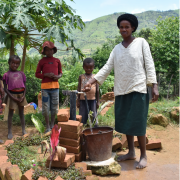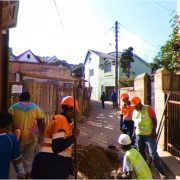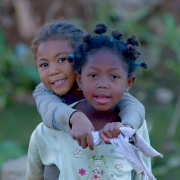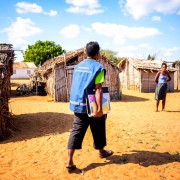Speeches Shim

In the village of Sabotsy Anjiro in Madagascar, a simple water tap installed outside Voahangy Rasoanantenaina’s door has changed her life. “Before the fountain, I had to get water from the public pump, a half-hour walk away,” said Voahangy, who has four children. “Having to do that twice a day meant that I lost two hours trying to access water and carry it home." “Now, the fountain is right in front of my home, and I can get as much water as I need, whenever I need it,” she said.

On the outskirts of Madagascar’s capital city, Antananarivo, getting enough water every day can be a difficult task. The national water utility JIRAMA is extending the water network out to people living in informal settlements, thanks to support from the Water & Development Alliance (WADA), a partnership between USAID and Coca-Cola.
Watch the full video: https://youtu.be/39me9Wty4Bw

Madagascar’s textile and apparel industry is the largest formal employer outside of agriculture. It has the capacity to create hundreds of thousands of new jobs if the industry can regain U.S. buyer confidence and take advantage of duty-free exports to the U.S. through the African Growth and Opportunity Act (AGOA). The USAID East Africa Trade and Investment Hub helps Madagascar-based apparel companies to improve their efficiency and institutionalize the best practices and standards that American apparel companies require. The end result is formal employment for Malagasy workers and quality product for U.S. businesses.

The entire population of Madagascar is at risk for malaria, and severe malaria is among the top five causes of death in the country, especially among young children, for whom the disease is a major killer of Malagasy children under five years of age. In this age group the national mortality rate is 7 percent, though this rate varies throughout Madagascar’s 22 regions; ranging from less than 1 percent in the central highlands to almost 11 percent in the coastal regions. Malaria disproportionately affects the poorest and least-educated families and is far more common in remote, rural areas than in urban and peri-urban areas. However, malaria is entirely preventable through simple, low cost measures. It is also curable, especially when diagnosed early and promptly treated.

Comment
Make a general inquiry or suggest an improvement.